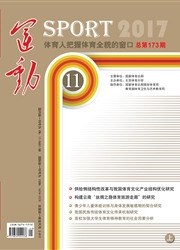

 中文摘要:
中文摘要:
目的 探讨早期椎体减压术对脊柱骨折后神经功能恢复情况的影响。方法 收集我院与西京医院2016年1月1日至2016年6月30日创伤性脊髓损伤患者79例,根据手术开始时间分为观察组(〈24 h)与对照组(≥24 h)。通过观察术前与术后3个月患者椎体形态、脊髓损伤水平评分(ASIA评分)、日本骨科协会评估治疗(JOA)评分及血清神经元特异性烯醇化酶(NSE)、S100B、超氧化物歧化酶(SOD)水平比较患者术后神经功能恢复情况。结果 JOA评分与ASIS评分显示,两组患者术后恢复程度无统计学差异(P〉0.05);术后3个月,观察组血清S100B、SOD水平较对照组恢复程度好,差异有统计学意义(P〈0.01);观察组Cobb角、矢状径、椎间隙高度及后凸畸形度较对照组更优,差异有统计学意义(P〈0.05);两组术后呼吸系统并发症较多,但两组相比无明显差异(P=0.691)。结论 创伤性脊髓损伤于伤后24 h内紧急手术治疗与伤后24~72 h内手术治疗患者的神经功能恢复无明显差别,但其相关血清因子水平以及功能恢复程度明显提高。
 英文摘要:
英文摘要:
Objective To investigate the effect of early decompression of the vertebral body on the recovery of neurological function after spinal fracture. Methods A total of 79 cases of patients with traumatic spinal cord injury in our hospital and Xijing Hospital from January 1, 2016 to June 30, 2016 were selected and divided into observation group (〈24 h) and control group (≥ 24 h) according to the start time of the operation. The postoperative neurological function recovery were compared by vertebral morphology, spinal cord injury score (ASIS score), Japanese orthopedic association assessment (JOA) score and serum neuron-specific enolase (NSE), S100B, superoxide dismutase (SOD) levels before operation and 3 months after operation. Results JOA and ASIS scores in the two groups showed no significant difference in postoperative recovery degree (P=0.544). The levels of serum S100B and SOD in the observation group were better than those in the control group after 3 months operation (P〈0.01). The Cobb angle, sagittal diameter, intervertebral height and kyphosis in the observation group had significant improvement compared with those in the control group (P〈0.05). There were much postoperative respiratory complications between the two groups, with no statistical significance (P=0.691). Conclusion Compared with patients undergo surgery at 24 - 72 h after injury, patients having emergency surgery within 24 h after injury has similar neural functional recovery, but the related factor levels and function recovery degree increase significantly.
 同期刊论文项目
同期刊论文项目
 同项目期刊论文
同项目期刊论文
 期刊信息
期刊信息
